The week started in Poland and ended back home, with a bike ride to a town I do not visit very often, Novelda.
33_1
On our last full day in Poland, my wife and her bridge partner Curra were going to play all day, so I used the day to visit the town of Przemyśl, about 90 km from Rzeszów and very close (10 km or so) from the Ukraine border. I drove on a local road, passing several villages and enjoying the landscape. In most of the villages, like this one, called Hyżne, people were on their way to church for Sunday mass:

33_2
The local community centre in another village, called Borek. In general, I was impressed by how neat and well-kept the countryside was, considering that this is a relatively poor region of Poland, certainly with much lower average incomes than the Warsaw region or Wrocław, the city in the west of Poland where I was born:

33_3
A bit further down the road, I stopped at a roadside shrine:

33_4
These shrines were everywhere along the road. This is Poland’s Catholic heartland:

33_5
But the real reason I stopped at this shrine was to enjoy the view of the San river:

33_6
I arrived in Przemyśl, parked the car, and spent the next couple of hours walking around the town. It is not a big place, about 60,000 inhabitants, but for its modest size it had many impressive buildings and looked like a very pleasant place to live. This is the main pedestrian street, somewhat deserted on a Sunday when most shops are closed:
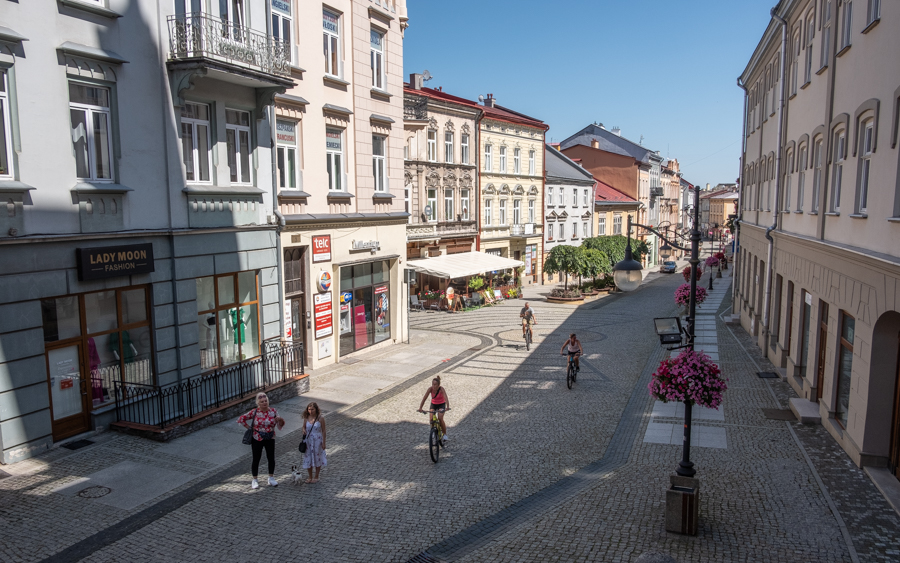
33_7
For a town this size, Przemyśl certainly has an impressive cathedral:

33_8
And the cathedral was doing brisk business with the Sunday mass, with an overflow crowd listening outside:

33_9
Like most Polish towns, Przemyśl has a large central square called Rynek (which in Polish simply means market square, reflecting medieval origins of the name). The bear at the centre of the fountain is a symbol of Przemyśl:

33_10
Another fountain, a mother photographing her son:

33_11
A monument to the Vyšehrad alliance of Poland, Hungary, the Czech Republic and Slovakia. There are strong historical ties to Hungary in this part of Poland, since it was part of the Austro-Hungarian empire until 1918, and Hungarian troops fought here against Russia during World War I, and also helped Poland in its war against Russia in 1920:

33_12
A much lighter WWI memorial, a short street named after the Good Soldier Švejk, the main character in a novel by Czech writer Jaroslav Hašek. Švejk is a conscripted soldier into the Austro-Hungarian army, whose main objective is to stay alive and have as good a life as possible in the circumstances. I remember reading and loving the stories about Švejk as a child in Poland, and it was wonderful to see a street in Przemyśl named after him:

33_13
I walked around the town some more. As usual, I looked for visually or otherwise interesting signs, like this old-style photography shop/lab:
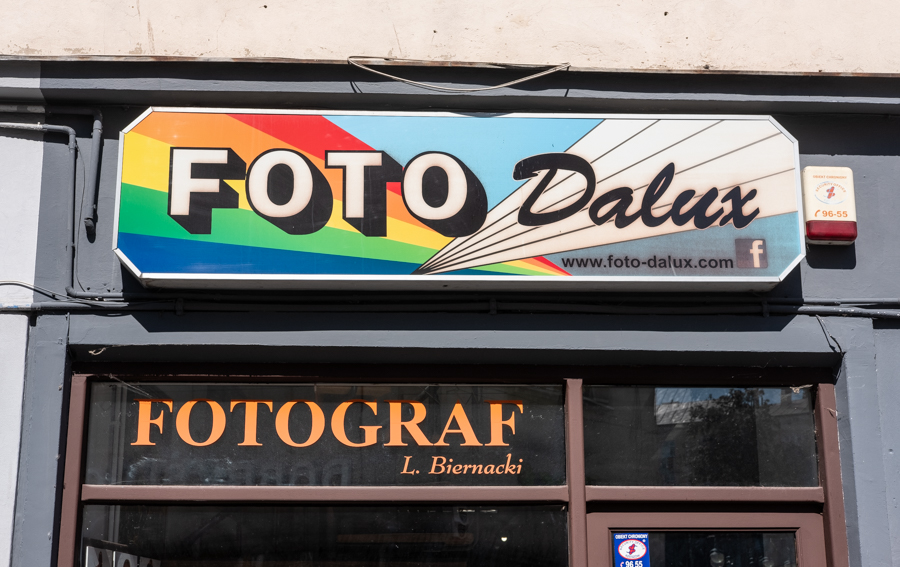
33_14
A private employment agency offering work in the Netherlands. While the flow of Polish workers working in countries like Germany, the Netherlands or the UK has slowed or even reversed because of strong economic growth and good opportunities in Poland, there is still apparently a market for such services in lower-income parts of the country like Przemyśl:
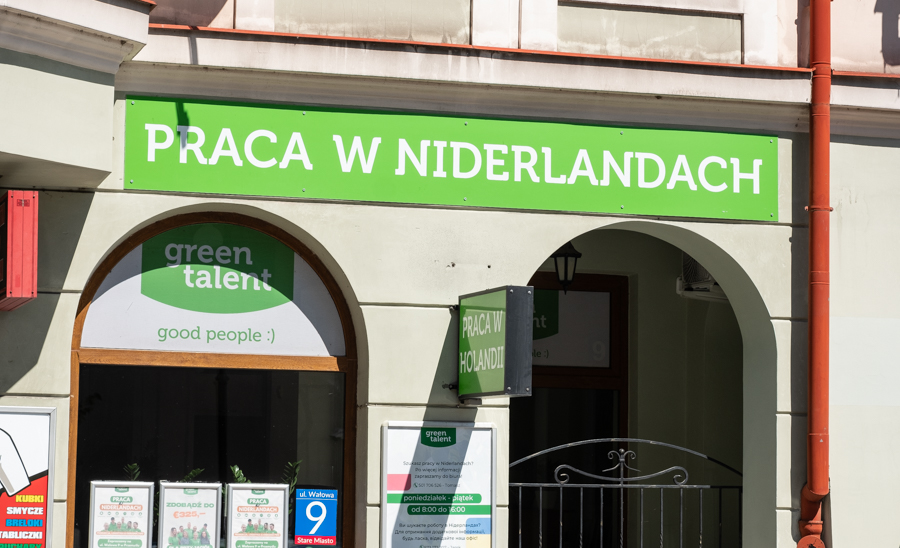
33_15
I walked down to the river (the San river, same as the one depicted in photo 5 above) and saw a sign of the times, a company of Polish soldiers on the move. With the war next door (although the front is several hundred km away), the entire eastern border of Poland has been reinforced. In this part of the country, Ukrainian soldiers are being trained, and much of the military hardware for Ukraine comes through Rzeszów airport. It is not a usual sight to see armed soldiers on the street in a Polish town:

33_16
Since Przemyśl is only about 10-11 km from the Ukraine border, I had the idea to cross into Ukraine and buy something, anything, as a symbolic show of support for the Ukrainian economy. But as I approached the Medyka border crossing, I could see a long line of trucks waiting, so I decided not to risk getting stuck in the mess. Instead, I found a small road through the fields which led me to a spot just a few hundred meters from the border. Along the way, I passed this lovely piece of graffiti, “Fuck PiS” (PiS is the ruling conservative-Catholic government party):

33_17
The road ended at a place called Fort Borek, a fortification from the early 20th century, a legacy of World War I:

33_18
A memorial plaque for Hungarian soldiers who fought here in 1915:

33_19
And in Poland’s 1920 war against Russia (which attacked Poland shortly after Polish independence), there was even help from across the Atlantic–I had no idea about this piece of history:

33_20
View of the fields from Fort Borek. The line of trucks at the border is visible in the distance:

33_21
I drove back to Rzeszów and waited for my wife and her bridge partner Curra to finish the tournament, which they did around 6:30 p.m. This is the last picture I took in Rzeszów, the clocks behind the reception of the hotel hosting the bridge tournament:
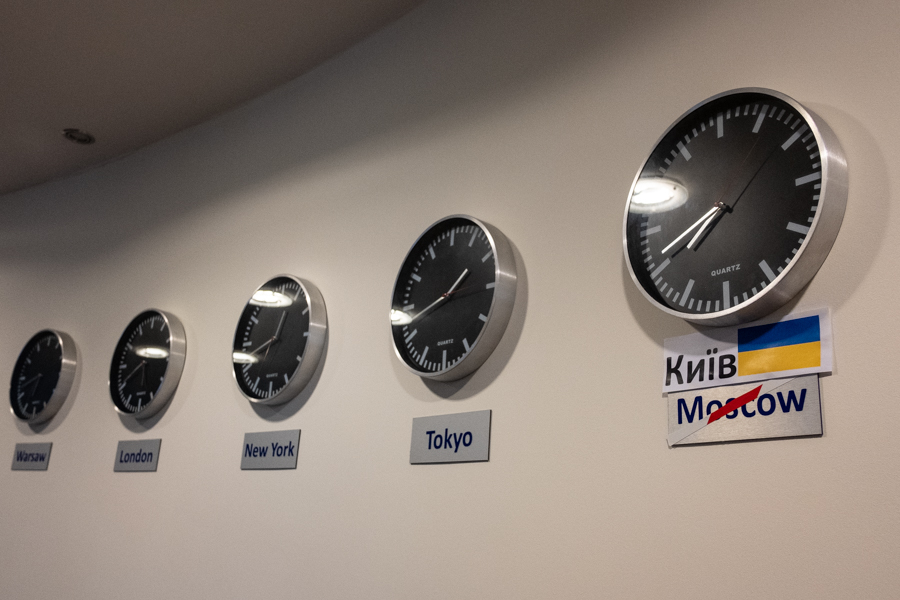
Afterwards, we drove to the 350 km to Warsaw, checked into our hotel near the airport and called an early night–our flight back to Alicante was leaving at 5:55 the following morning. More pictures from Rzeszów and Przemyśl can be seen here.
33_22
Back home, my ex-trainee Antanina was in town, and Carolina and I went out for lunch with her one day at a Moroccan restaurant in the centre:

33_23
I went back to my routine of going to the beach bar for a beer or cycling along the beach. Here, a dog is relaxing in the shade at Playa San Juan:

33_24
An uninvited guest at my table:

33_25
During one of my morning bike rides, some paddle boarders on Playa Muchavista:

33_26

The next five images are strictly speaking not from this week, they were taken earlier in the summer, but I got the developed roll of Ektachrome 100, my first roll of slide film in at least 10 years, back from the lab this week, so I post them here.
33_27
Lucas, the son of our Argentine friend Eliot, going in his father’s footsteps at the BBQ:

33_28
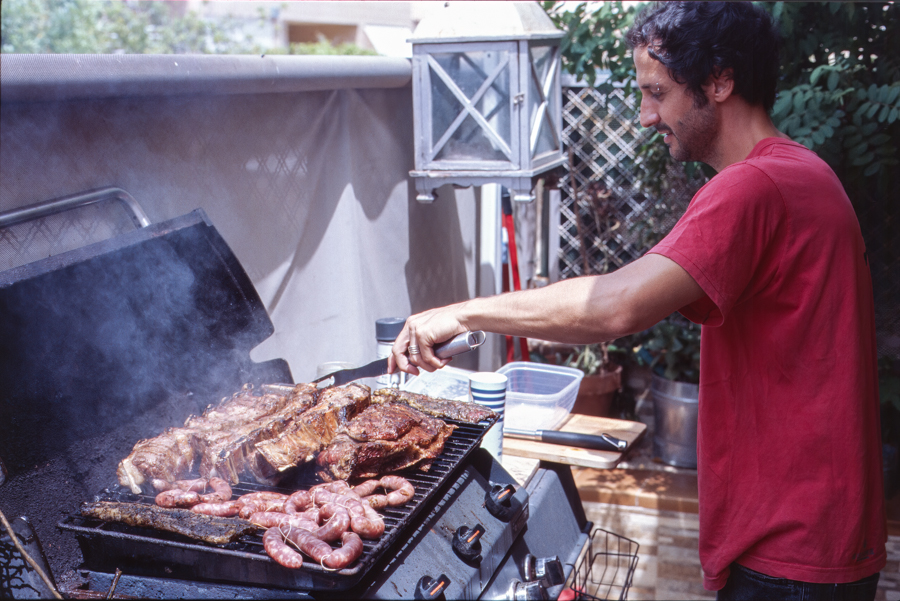
33_29

33_30
A little girl on Alicante’s “mushroom street”:
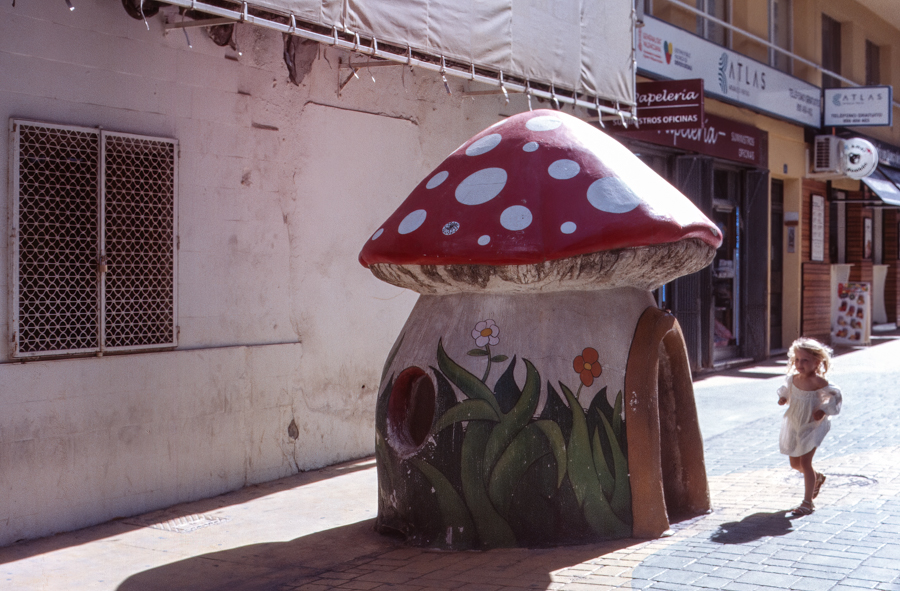
33_31
A colourful ruin in the centre:

The remaining photos are from the town of Novelda, about 50 km from Alicante, which I visited on my bicycle for the first time during my weekend ride.
33_32
The main square of Novelda, Plaza de España:

33_33
Novelda’s town hall:

33_34

33_35
Inside the small colonnade of the town hall there are mosaics depicting the main economic activities of the area, first quarrying:

33_36
Trade:

33_37
And of course agriculture:

33_38
“Gugu’s grandmother’s bar”:
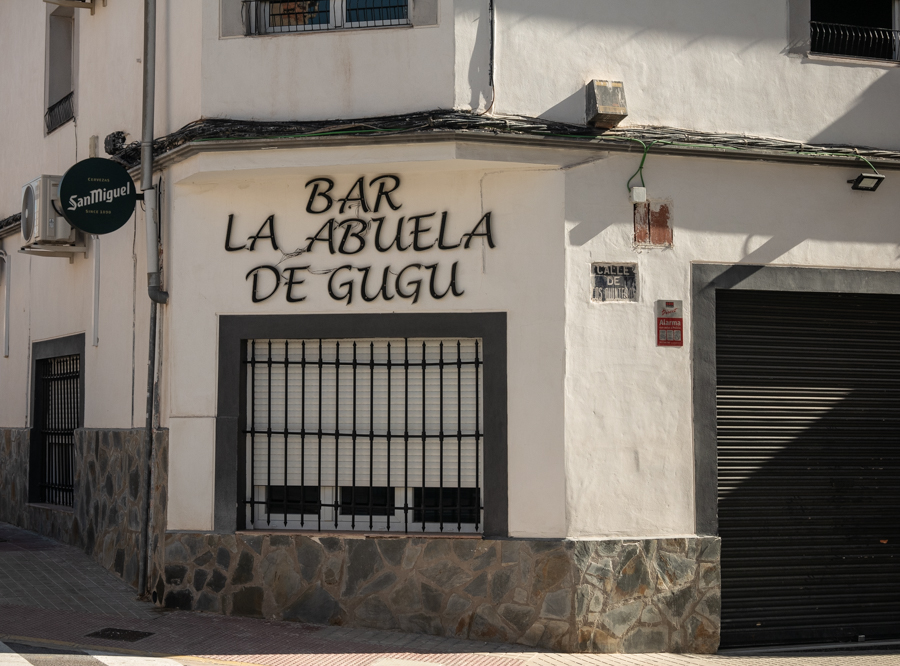
33_39
There were a lot of nice murals in the centre of Novelda:

33_40
The text says (in Valenciano), “Novelda saying: to have ideas of an empty snail”, whatever that means:

33_41
A young woman in a bucolic setting:
